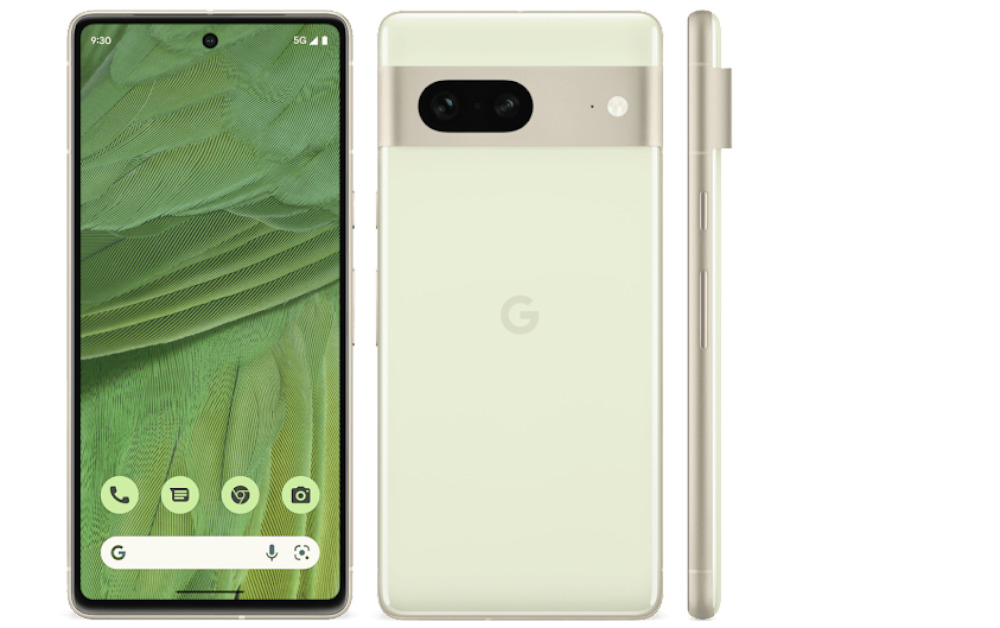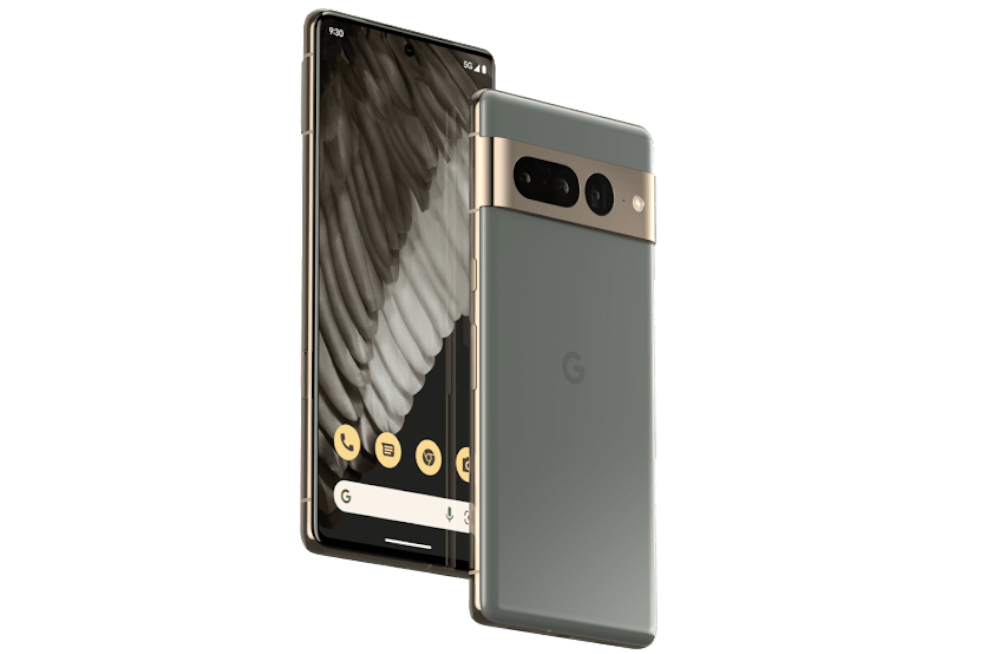After much speculation, rumours and leaks, the Google Pixel 7 and Pixel 7 Pro have finally made their debut at the “Made by Google” event. Without further ado, here’s everything you need to know about the company’s new flagship smartphones.
Specifications remain largely consistent with what we’ve encountered before the event, except now it comes straight from the horse’s mouth. The devices share striking similarities; both feature near-indistinguishable aesthetics and design, brand-spanking new in-house Tensor G2 chipset, built-in Titan M2 security chip powering advanced face-unlock and in-display fingerprint scanner, IP68 water resistance, and the cleanest, most bloat-free version of Android 13 you’re likely to find.
Look closer and there are key differences that set these two devices apart and go some way toward warranting the $300 price difference. Let’s proceed.
Pixel 7

Kicking off with the standard variant, the Pixel 7 features a 6.3in FHD+ AMOLED display, with a 2400×1080 resolution at 90Hz refresh rate, covered by Corning Gorilla Glass Victus and housed in a 100 per cent recycled aluminium frame. Google claims the device has a 25 per cent greater brightness over its predecessor, with a rated peak brightness of 1,400 nits and support for HDR.
Taking a closer look at the SoC, the all-new Tensor G2 is an eight-core processor that features two ‘big’ cores running at 2.85GHz, two ‘medium’ cores running at 2.35GHz, and finally, four ‘little’ cores running at 1.8GHz.
Interesting to note, the company’s previous generation Tensor chipset operated in much the same way, with core clock speeds between ‘big’ and ‘medium’ cores running between 5MHz and 10MHz higher and featuring the same Arm Cortex X1 and A55 chips. The key upgrade is the ‘medium’ core, which now uses an Arm A78 instead of an A76.
It would be interesting to see a performance comparison between the two generations. Also, the Tensor G2 is now running a next-generation custom TPU AI accelerator, enhanced Titan M2 security chip, and an Arm Mali G710 GPU.
Moving onto the rear, the camera array features a primary 50-megapixel with f/1.85 wide-angle aperture lens, capable of 8x high-resolution zoom, and a 12.2-megapixel fitted with f/2.2 aperture lens for ultra-wide shots. The front-facing selfie camera consists of a 10.8-megapixel, f/2.2 aperture ultra-wide lens that covers a 92.8-degree field of view and a larger sensor for improved night shots.
Rounding off, the Pixel 7 is available in either 128GB or 256GB storage configurations, and features 8GB of LPDDR5 RAM. The battery has an overall capacity of 4,355mAh, with 21W wired or 20W wireless charging. Google claims up to 72 hours of battery life with extreme battery saver enabled, and a charge time of 30 minutes for 50 per cent battery life via Google’s 30W USB-C adapter.
Pixel 7 Pro

Google’s Pro variant features a larger and arguably better 6.7in QHD+ LTPO display, with a screen resolution of 3120×1440 and quicker 120Hz refresh rate. Google again claims a 25 per cent brighter screen when compared with the Pixel 6 Pro, with a rated peak brightness of 1,500 nits and HDR support.
Rear camera array sees an inclusion of a 48-megapixel telephoto lens, with a f/3.5 aperture capable of 5x optical zoom, macro zoom, an improved 30x high-resolution zoom, and optical image stabilisation. Up front, the centre punch-hole styled selfie-camera remains the same at 10.8 megapixels.
While the chipset is identical, it is now mated with 12GB of LPDDR5 RAM, and in addition to 128GB and 256GB storage options, Pixel 7 Pro will also offer a 512GB variant in specific regions. Battery capacity also sees an increase compared with the standard version and includes a 5,000mAh battery, while charge times remains the same, lending to its 25W wired fast charging capabilities and 20W+ wireless charging support.
Both phones also come equipped with a list of camera and software features including;
- Photo Unblur
- Faster Night Sight
- Real Tone improvements
- Movie Motion Blur
- Audio Message Transcription
- Clear Calling
- Google One VPN, available later this year
Last but not least, connectivity options include a single USB Type-C 3.2 Gen 2 port, 5G and 4G LTE carrier support with mmWave technology available on select models, plus Wi-Fi 6E support with Bluetooth 5.2.
Google Pixel 7 is available in two options, a 128GB for £599 and a 256GB for £699, in either Snow, Obsidian or Lemongrass colourways. Meanwhile, the Google Pixel 7 Pro starts at £849 for the 128GB version and £949 for the 256GB variant in Snow, Obsidian or Hazel colourways.
Pre-orders are now available in 17 countries with devices shipping from October 13 and for a limited time, includes Pixel Buds Pro free with every purchase, or £179 off Google Pixel Watch.
